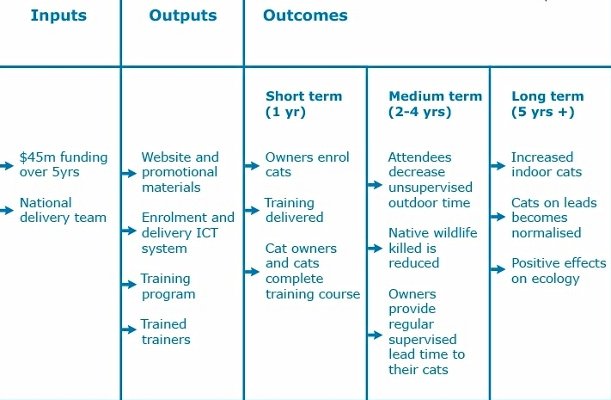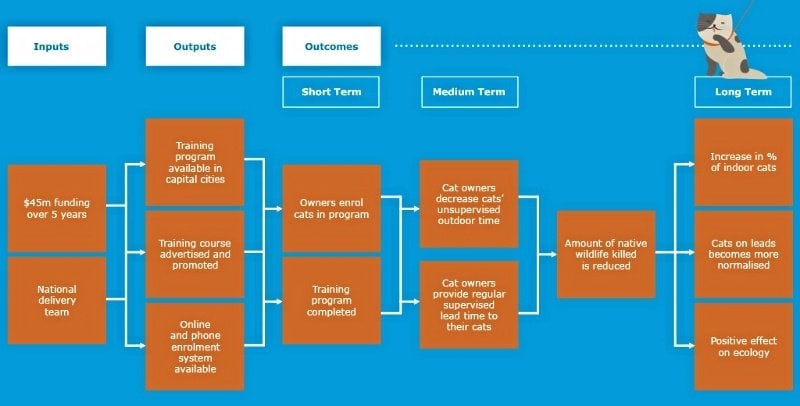Program Theory and Program Logic: Articulating how your program works

How to develop program theory and program logic
Have you ever noticed how hard it can be to articulate to others exactly what your program is for, and how it works? And how hard it can sometimes be to get internal buy-in and support as a result?
The benefits of having a program theory
Put simply, program theory is the way that you articulate the “why” and the “what” of your program: the reason for its existence, and the steps it will go through to accomplish its goal. It is a description of how the desired changes will occur, based on previous research and experience.
Here are seven reasons why a solid program theory is worth its weight in gold:
- Creates a shared understanding of the program among stakeholders.
- Provides an opportunity to refine and improve the program at the design stage.
- Allows you to identify potential supporting and disrupting factors: and be prepared for them.
- Provides a time-bounded roadmap, promoting shared expectations among stakeholders.
- Provides an opportunity to pressure-test the beliefs and assumptions underlying the program.
- Ensures the long-term goals are kept in sight while short-term goals are implemented
- Helps to identify suitable performance measures for the program.
How to develop a Program Theory
Below is a list of the key activities typically involved in developing program theory.
If the list looks daunting, don’t worry! You’ve probably already ticked off some of the stages in the early development of the program, or perhaps someone else in the organisation already has the information you need. In this case, just a short review and / or a workshop may well be sufficient.
Steps for developing a program theory:
- Identify the primary reasons for your program’s existence – this should form your frame of reference from beginning to end
- Review existing information – look for anything that will inform how your program should operate and the outcomes it is likely to achieve
- Conduct an environmental scan – look for barriers, enablers and related programs and policies
- Map stakeholders – understand who will be involved, at what level, stage by stage
- Obtain stakeholder input – facilitate buy-in and understand needs
- Draft your program theory – develop and document your program theory based on the information gathered in the previous steps
- Circulate for stakeholder feedback – be prepared for at least one round of changes
- Use your program theory – a program theory is a useful program management and governance tool.
Resourcing your program theory appropriately
Program theories come in all shapes and sizes so it’s important that the effort expended in developing the theory is proportionate to the scale of the program itself. A smaller-scale program, for instance, would certainly merit a leaner program theory.
Program logic formats
Now you have captured the detail, you may like to sum up your program theory in the form of a program logic: this is simply a graphical portrayal of your theory that is succinct and easy to understand.
Your program logic can take the form of words, diagrams, tables, or a combination of all three. Program logics are often (but not always) captured in one page, and are typically divided into inputs, outputs and outcomes. See below for two very simple examples for a fictional program.
Figure 1. Sample program logic for fictional program: table format

Figure 2. Sample program logic for fictional program: flowchart format








 We are all about sharing our expertise to help you and your organisation be the best it can be.
We are all about sharing our expertise to help you and your organisation be the best it can be.